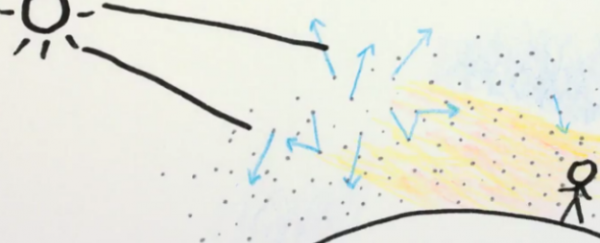You might've already heard the reason why the sky is blue - sunlight is white light composed of many frequencies, and higher frequency blue light scatters in the air more than lower frequency red light. But then, violet light has an even higher frequency of blue light, so… why isn't the sky purple?
Single frequency light, like that from a laser or from splitting white light into a rainbow through a prism, is classified as pure, monochromatic light, and includes colours such as red, orange, yellow, green, cyan, and blue. Colours made from polychromatic light, such as purple, pink, and magenta, can only be made using a combination of various frequencies of light.
Now let's get out our trusty chromaticity diagrams. If you don't have one, the latest episode of MinutePhysics has got you covered. In this diagram, there's a clear line through the various colours made from polychromatic light that are classified as 'hot' colours - colours that hot things glow. This ranges from red hot, then white hot, and all the way up to blue hot. Take the Sun, for example. It actually starts off glowing white hot, but when it hits our atmosphere, its light is split, so the sun can sometimes looks sort of red-hot, and the sky kind of blue-hot.
But if you take another look at yours or Henry from MinutePhysics' chromaticity diagram, you'll notice that the line through hot colours never makes it to purple, or a deep violet blue. Why? Well, it's something about bread, and pancakes, and gravy? Vegetarian gravy? You're going to have to watch the latest episode of MinutePhysics to find out, but it's the coolest stretch from "Why isn't the sky purple?" to "because gravy", we've ever seen.
Source: MinutePhysics
